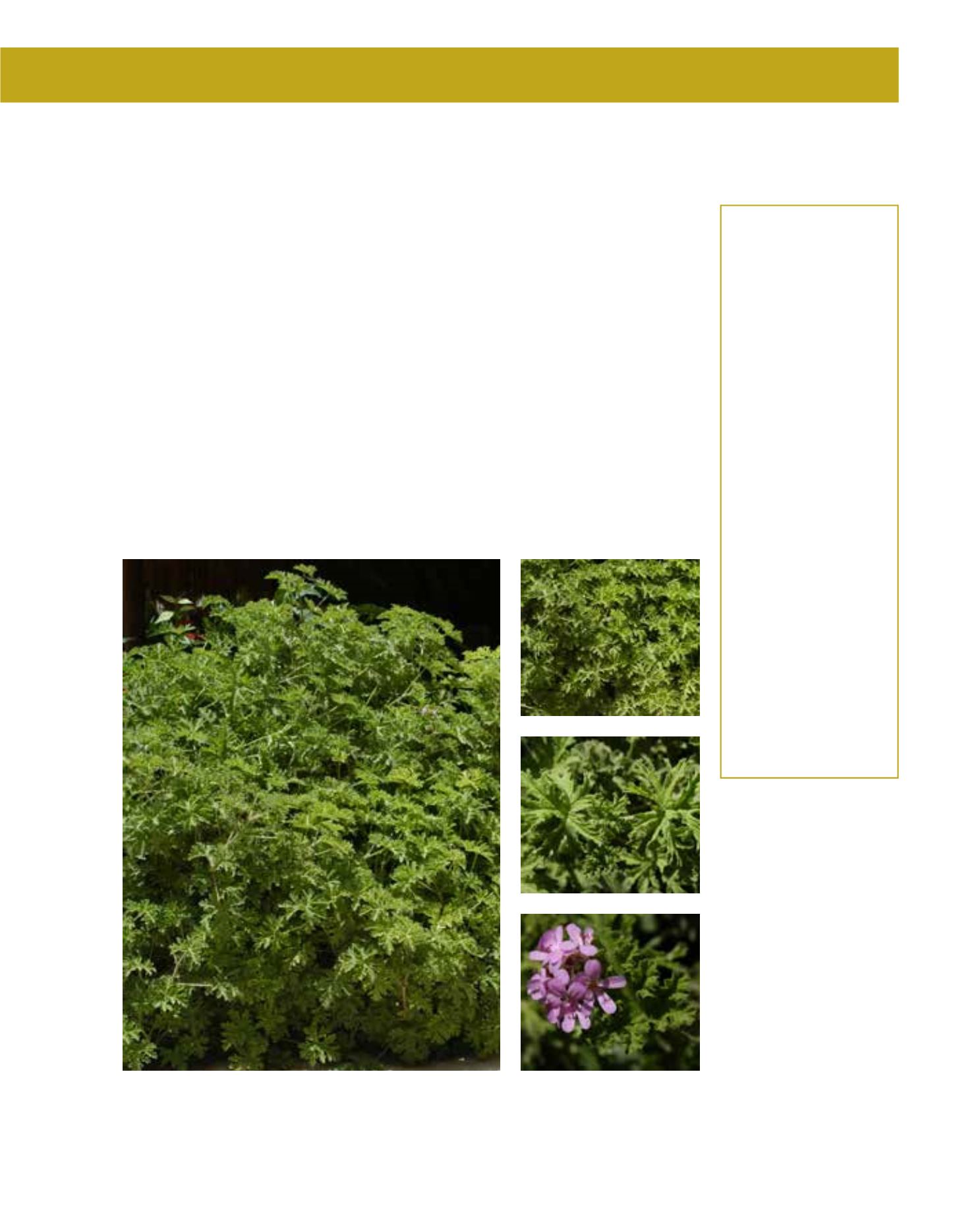

GENERAL
Origin
:
sub-tropical
Humidity
:
semi-humid, very
humid, extremely
humid
Propagation :
sowing and
pricking out,
cuttings
Maintenance :
high
CONDITIONS
Urban climate :
resistant
Dessication :
vulnerable
Stagnant water :
vulnerable
Irrigation
:
high
Salinity/ppm :
moderate (2000
ppm)
Hardiness
:
-3°C
SHAPE
Type
:
annual, biennial,
perennial,
sub-shrub
Height
:
0.3 m-0.9 m
Spread
:
0.2 m-0.7 m
Foliage
:
evergreen
FLOWER
Colour
:
white, pink, red,
purple
Size
:
4 cm
Period
:
January - May
Smell
:
scented, leaf,
flower
FRUIT
Type of fruit :
achene
Fruit size
:
0.5 cm
Rose Geranium is grown for its intensely scented leaves. It is an erect, branched bush growing
to 1 metre high with equivalent width, originating from the Cape Province, South Africa. Its
hairy, fleshy stems become woody and brittle with age and are densely covered with evergreen,
wrinkled foliage in fresh green. Coated in glandular hair, they instantly release a strong odour
of roses, hence its common name. Its fragrance is also the reason for the species’ name since, in
Latin, graveolens means strong-smelling. They are used to manufacture geranium oil which is
far less expensive than true rose oil. The pink or white flowers are smaller and less showy than
the floral display of its relative Garden Geranium. Nevertheless, they look attractive and enhance
a mixed border from late winter to summer, with a peak in spring. Rose Geraniums are used
to hot summers and mild winters without frost. They do best in semi-shade positions protected
from full sun in the early afternoon, and are an attractive addition to a garden in Arriyadh. The
soil should be moist all year round, but brief periods of drought are tolerated. The plants are best
grouped close to walkways to facilitate occasional brushing by pedestrians. They grow well in
pots and containers if drainage is adequate. Soils may range from acidic to alkaline, but should
not be compacted. Poor soils should be improved by compost, and some slow-release fertiliser
every so often is welcome. Set amongst taller shrubs, this healthy plant makes an ideal filler.
224
Pelargonium graveolens,
Geraniaceae
Rose Geranium
















